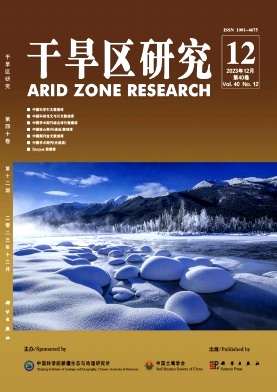Analysis on Species Diversity of Oxytropis in Xinjiang
Q3 Environmental Science
引用次数: 0
Abstract
There are 98 species and 2 varieties in the genus of Oxytropis in Xinjiang,and they account for 67.1% of the total in China.Among them 7 species are endemic in Xinjiang,58 ones are distributed only in Xinjiang in China,and about 65% species belongs to the two of them.Species are all distributed in 11 floristic regions in Xinjiang.The Junggar Basin and the Tianshan Mountains,especially the Tianshan Mountains,are regarded as the areas with the most abundant species of Oxytropis in Xinjiang.So it is concluded that the Junggar Basin and the Tianshan Mountains may be the central areas of modern distribution and origin differentiation of Oxytropis DC.Most species(about 99%) are distributed in the mountainous areas with an altitude range from 1 001 m to 5 000 m a.s.l.,especially in an altitude range from 1 001 m to 4 000 m,and the richest species are distributed in an altitude range from 2 001 m to 3 000 m.There are two kinds of life-forms,hemicryptophyte and chamaephyte,the proportion of the former is as high 96%,but that of the latter is 4% only.The relations of flora in Xinjiang are the closest with that in adjacent Qinghai Province and Tibet Autonomous Region(their similarity coefficients are 28.8% and 28.6% respectively),but not so close with that in Inner Mongolica and Gansu Province.The relations of flora in Xinjiang are the closest with that in Kazakhstan(the similarity coefficient is as high as 65.2%),then with that in west Siberia and Kyrghizstan(the similarity coefficients are 41.8% and 41.0% respectively),and the weakest with that in Mongolica,Tajikistan and Pakistan(their similarity coefficients are 29.2%,22.8% and 11.6% respectively).新疆棘豆属植物物种多样性分析
新疆棘豆属共有98种2变种,占全国总数的67.1%。其中,新疆特有种7种,新疆特有种58种,其中新疆特有种约占65%。种均分布于新疆的11个区系。准噶尔盆地和天山山脉,尤其是天山山脉,被认为是新疆棘豆属植物种类最丰富的地区。因此,准噶尔盆地和天山山脉可能是棘足虫现代分布和起源分异的中心地区。大部分物种(约99%)集中分布在海拔1 001 ~ 5 000 m的山区,尤其是1 001 ~ 4 000 m的山区,2 001 ~ 3 000 m的山区物种最丰富。有半隐藻和变色藻两种生命体,前者所占比例高达96%,后者仅占4%。新疆与相邻的青海省和西藏自治区的植物区系关系最为密切(相似系数分别为28.8%和28.6%),而与内蒙古和甘肃的相似系数则不太接近。新疆与哈萨克斯坦的植物区系关系最密切(相似系数高达65.2%),其次是西伯利亚西部和吉尔吉斯斯坦(相似系数分别为41.8%和41.0%),与蒙古、塔吉克斯坦和巴基斯坦的植物区系关系最弱(相似系数分别为29.2%、22.8%和11.6%)。
本文章由计算机程序翻译,如有差异,请以英文原文为准。
求助全文
约1分钟内获得全文
求助全文
来源期刊

干旱区研究
Environmental Science-Water Science and Technology
CiteScore
2.50
自引率
0.00%
发文量
4294
期刊介绍:
 求助内容:
求助内容: 应助结果提醒方式:
应助结果提醒方式:


